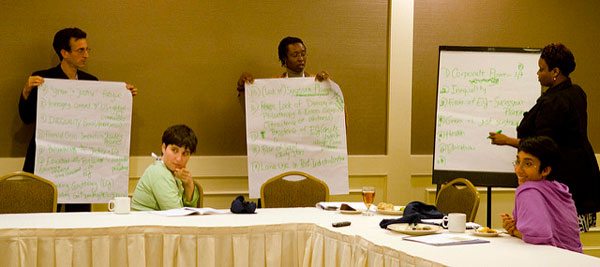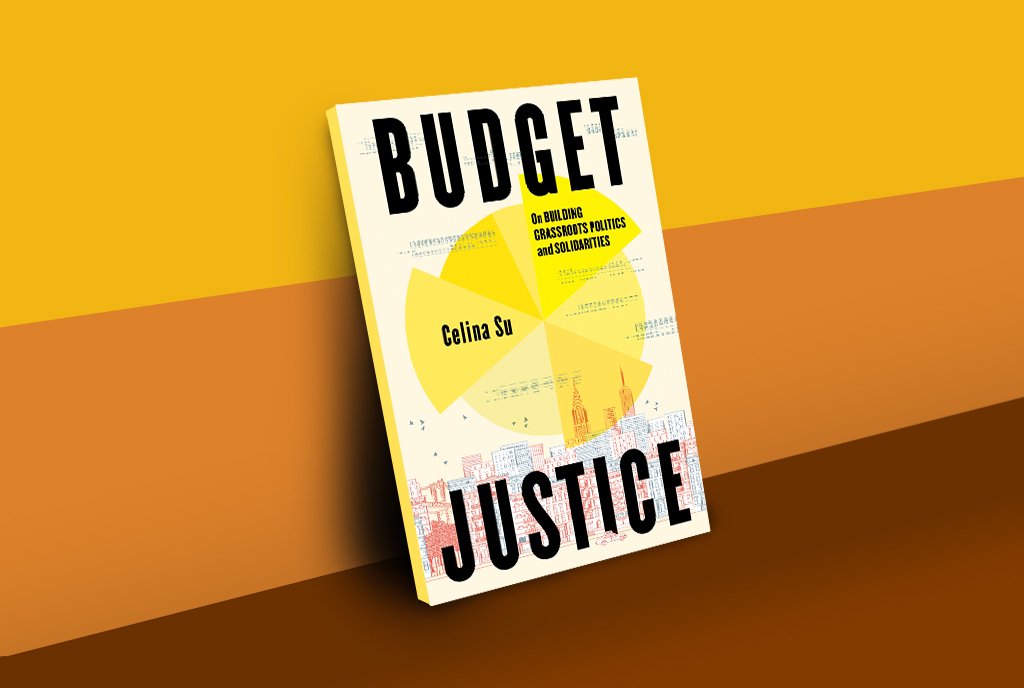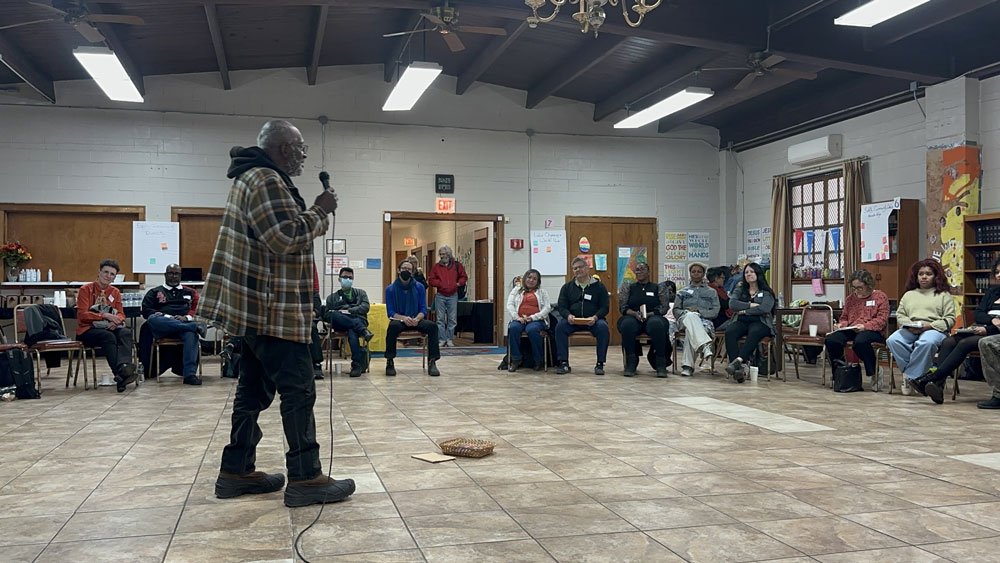
The environmental movement has long been divided along race and class lines. Perhaps there is some momentum to change all of that in the face of the desperate need for equity and people to be at the center of the sustainability agenda if we wish to build the movement necessary to effectively take on the challenge of climate change.
In spite of recent setbacks such as the Trump administration’s withdrawal of the U.S. from the Paris Agreement and the Environmental Protection Agency’s (EPA) repeal of the Clean Power Plan, the environmental movement has overall had great success—which it will need to build upon to tackle the tall order of saving the planet.
“From the Margins to the Mainstream,” a recently released report by Building Equity & Alignment for Impact, argues that “the challenges of the new political landscape should not overshadow the meaningful advancements towards equitable climate policy that were made during the CPP [Clean Power Plan] process.” The report details those successes, and the stories and nonprofit organizations behind them, to “offer crucial lessons to consider.”
The Building Equity & Alignment Initiative (BEA) is the network behind the equity provisions of the Clean Power Plan (CPP). Though the plan has been repealed, the network that developed during the CPP rulemaking process—comprising funders, the “big green” groups, and grassroots environmental rights organizations—is a potentially powerful platform for the next, and crucial, part of the work.
The network first came together in 2013 after the failure of the Waxman-Markey climate bill, considered a low point in the history of the movement because the efforts of environmental justice groups and green NGOs to come together to discuss the bill were unsuccessful and led to “profound distrust.” The Waxman-Markey bill, also known as the American Clean Energy and Security Act, would have established a nationwide greenhouse cap-and-trade system to incentivize the development of a clean-energy economy. Environmental justice leaders were concerned by the focus on “market-based solutions that maintain patterns of environmental racism, ignore co-pollutants, and often violate Indigenous sovereignty.” They had also previously called for a transition beyond an extreme energy economy and toward one that also provided economic justice for its workers. Environmental justice leaders did not support the bill and fought it at the local level. It moved forward with the support of green NGOs and passed the House, but failed to make it through the Senate.
Environmental justice leaders strongly felt that a lack of movement alignment contributed to Waxman-Markey’s failure, which informed their response to the Clean Power Plan, conceived as an EPA rule after the inability to pass legislation at the federal level. These leaders understood the rule’s historic significance and appreciated its focus on energy efficiency and renewable energy, but they also understood, as members of frontline communities themselves, that moving the implementation of cap-and-trade to the state level meant that their communities would likely continue to bear the brunt of these tradeoffs—which were likely to increase with the new rule.
Quickly, they moved to involve themselves in the rulemaking process. They informed then–EPA Director Gina McCarthy of their concern that the CPP did not require states to address equity or ensure a community engagement process and offered concrete equity upgrades to the rule. Further, they used the recommendation development process to educate and engage environmental justice communities across the United States. Environmental justice leaders also hosted conversations “aimed at encouraging green NGOs that were receptive to incorporate their recommendations…in their comments to the EPA.”
After undertaking to understand the complicated rule processes surrounding its passage, the environmental justice leaders noted that an executive order by President Clinton already required the EPA to address disproportionate environmental effects on low-income and “minority” communities, and that the Clean Power Plan was in violation of it. They argued to strengthen what was already there in the final version of the CPP, with state requirements for environmental justice impact analysis as part of their Statewide Implementation Plans.
These leaders still oppose the Plan’s market-based mechanisms, which the green NGOs still support, albeit with environmental justice upgrades. Nevertheless, the alignment achieved through relationship-building has continued and remains a solid foundation for future work.
Sign up for our free newsletters
Subscribe to NPQ's newsletters to have our top stories delivered directly to your inbox.
By signing up, you agree to our privacy policy and terms of use, and to receive messages from NPQ and our partners.
Six key factors contributed to the environmental justice leaders’ success in centering equity in climate policy and building greater alignment with green NGOs.
- Green NGOs committed to work alongside environmental justice leaders. “Although the size and organizational structures of green NGOs were challenging, EJ advocates recognized that these organizations maintained influence and had technical resources that could be leveraged on behalf of EJ communities.”
- Environmental justice organizations built strategic grassroots networks. “National grassroots networks comprised mainly of EJ organizations focused on preparing grassroots organizations to participate in processes, share concerns, and influence their state compliance plans.”
- Academic institutions provided support to environmental justice leaders. “With support from the New School, EJ leaders could travel to meet, and they hosted two webinars, and published important white papers that fleshed out their equity concerns in detail.”
- Environmental justice organizations partnered with environmental justice policy advocates to build capacity to shape policy. “In order to ensure that EJ leaders could grasp the implications of the highly technical rule for their communities, provide input to the EPA, and contribute to alignment conversations on climate policy, EJ policy advocates partnered with local EJ groups to arrange regional grassroots trainings…The knowledgeable feedback and genuine interest from community members on the impact of climate policy also helped to refine alignment conversations that centered on respecting frontline perspectives.”
- Funders played a crucial by investing in long-term alignment relationships. “Extremely concerned about the lack of equity in climate policy and concerted action, and understanding that people working together could have a greater impact than working alone, these philanthropic leaders began investing in alignment relationships.”
- EJ leaders and green NGOs worked together to identify alignment for action on equitable climate policy. “EJ leaders and mainstream environmental leaders…worked together to develop a platform entitled Six Environmental Justice Points of Alignment for National Allies.”
Antonio Lopez, a coauthor of the report and chair of BEA’s research working group, says that the BEA’s approach is to “bring together allies and mainstream greens in a principled manner so that they are listening and supporting the experience of the grassroots groups. It’s not just about the CPP, but the way we do our work and the way we feel we’re going to win ultimately. It’s based on a long-term experience of people not working that way, feeling they can move policy without the guidance of the grassroots EJ sector. We know from experience that that just doesn’t work.”
The “principled manner” Lopez speaks of is rooted in the Jemez Principles for Democratic Organizing that came out of the 1996 environmental meeting on globalization in Jemez, New Mexico to support common understanding across “different cultures, politics and organizations.”
The BEA launched four years ago when the Overbrook Foundation looked at the environmental field and wondered why people weren’t working together. It convened people at Wingspread, a conference center operated by the Johnson Foundation, to explore a vision of working together. Lopez says it was helpful to have the dialogue initiated by a thoughtful funder. “Many networks, you build it and you have to go look for funders to support it, so it isn’t easy. So, it was good that funders were there from the beginning, and not wanting it to be funder driven. It had to come out of dialogue, so we had to address the way we work together so that there is equity.”
The BEA comprises different working groups: communications, research, funder engagement, internal (which manages oversight of participants), as well as a weaver working group that makes decisions and oftentimes includes the co-chair of the working groups. Jennifer Near, BEA coordinator and recently hired first staff, says that while BEA is still an emerging effort, it is named and held as a critical space because the work of alignment requires relationships and the negotiating of power, the burden of which has often been borne by grassroots organizations. The network tries to not only implement but embody the principles of alignment and equity. It works because people realize they are not going to win without each other. Near says, “We’re not sharing power for the sake of sharing power, but for the sake of survival.”
Former UN Climate Chief Christiana Figueres has said that the window to act on climate change closes in three years. What needs to happen in these three years? Doyle Canning, coauthor of Re: Imagining Change, a longtime climate movement strategist, and a member of the communications team at BEA, says, “According to scientists, we need total transition off fossil fuels, and in order to get to zero percent emissions economy by 2050, we have to start now. This means electric cars, solar and wind power, and the planting of 23 trillion trees to restore the atmosphere by restoring biodiversity. Plants, trees, and agriculture draw carbon from the sky and store it in the soil.”
But, even if we managed to commit to begin doing this in the next three years, what we have now—floods, storms, droughts, fires—is the new normal, so we also need adaptation strategies. The Paris Agreement was an agreement to limit warming to less than two degrees, and we’re at almost one degree right now. In Alaska and Louisiana, indigenous and low-lying communities have already had to adapt— sea level rise has led to the need to relocate. Canning says, “For the communities that are part of this network, they’re living it now.”
The climate movement wants more change, but it is also trying to hold on to what it has. Lopez says, “Change is not going to happen at the federal level; we’re playing defense there. Things will happen at the state level. Our hope is that what we’re doing is not considered unique. This is a movement-building thing. We don’t want the symbolic equity committee. We want to try to work more transformationally.”











